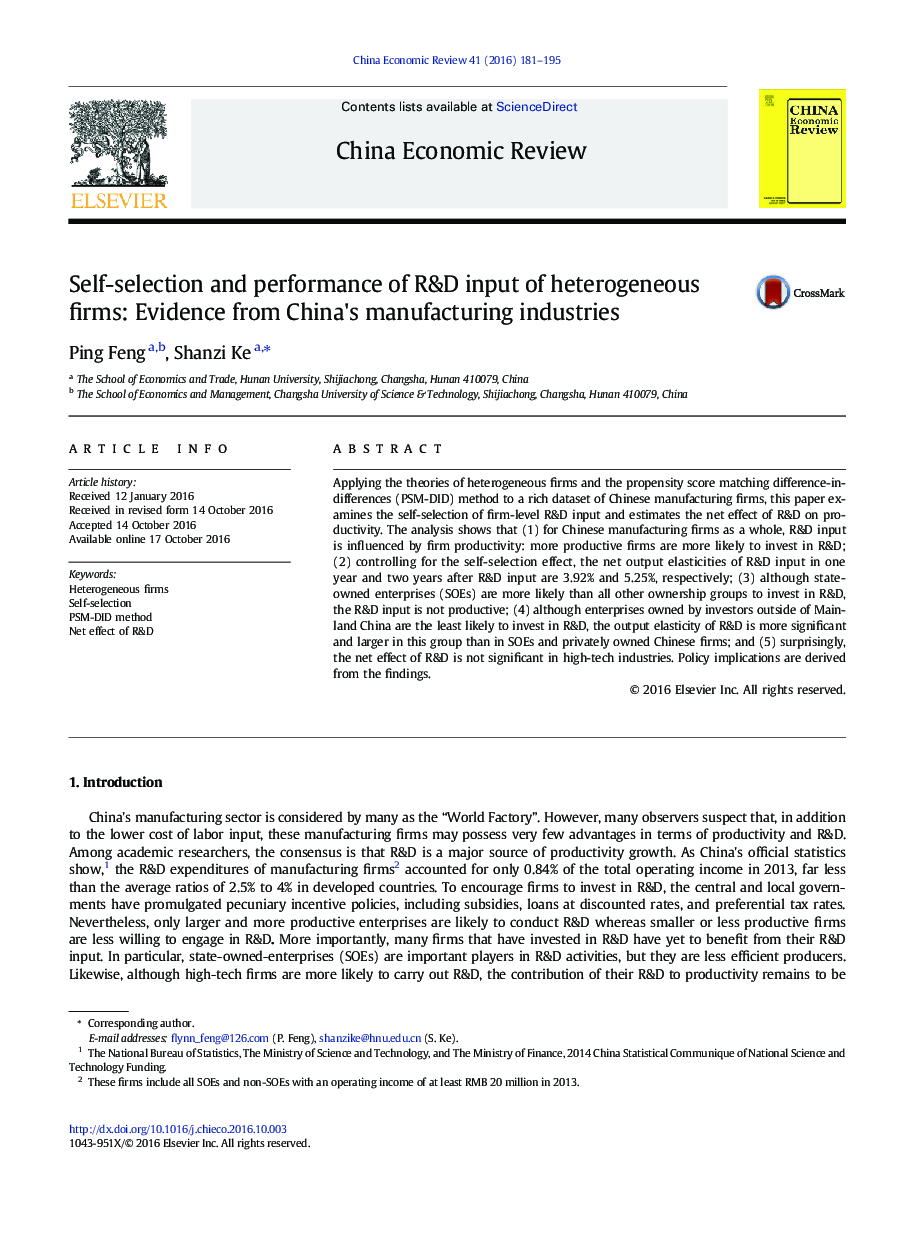| Article ID | Journal | Published Year | Pages | File Type |
|---|---|---|---|---|
| 5047245 | China Economic Review | 2016 | 15 Pages |
â¢We estimate self-selection of firm R&D and the net effect of R&D on firm productivity.â¢We find that R&D input is self-induced by productivity of the manufacturing firms.â¢The output elasticity of R&D is 3.92% and 5.25% in one year or two after investment.â¢SOEs are most likely to invest in R&D, but the output elasticity is insignificant.â¢FDI firms are least likely to invest in R&D, but their R&D input is very productive.
Applying the theories of heterogeneous firms and the propensity score matching difference-in-differences (PSM-DID) method to a rich dataset of Chinese manufacturing firms, this paper examines the self-selection of firm-level R&D input and estimates the net effect of R&D on productivity. The analysis shows that (1) for Chinese manufacturing firms as a whole, R&D input is influenced by firm productivity: more productive firms are more likely to invest in R&D; (2) controlling for the self-selection effect, the net output elasticities of R&D input in one year and two years after R&D input are 3.92% and 5.25%, respectively; (3) although state-owned enterprises (SOEs) are more likely than all other ownership groups to invest in R&D, the R&D input is not productive; (4) although enterprises owned by investors outside of Mainland China are the least likely to invest in R&D, the output elasticity of R&D is more significant and larger in this group than in SOEs and privately owned Chinese firms; and (5) surprisingly, the net effect of R&D is not significant in high-tech industries. Policy implications are derived from the findings.
